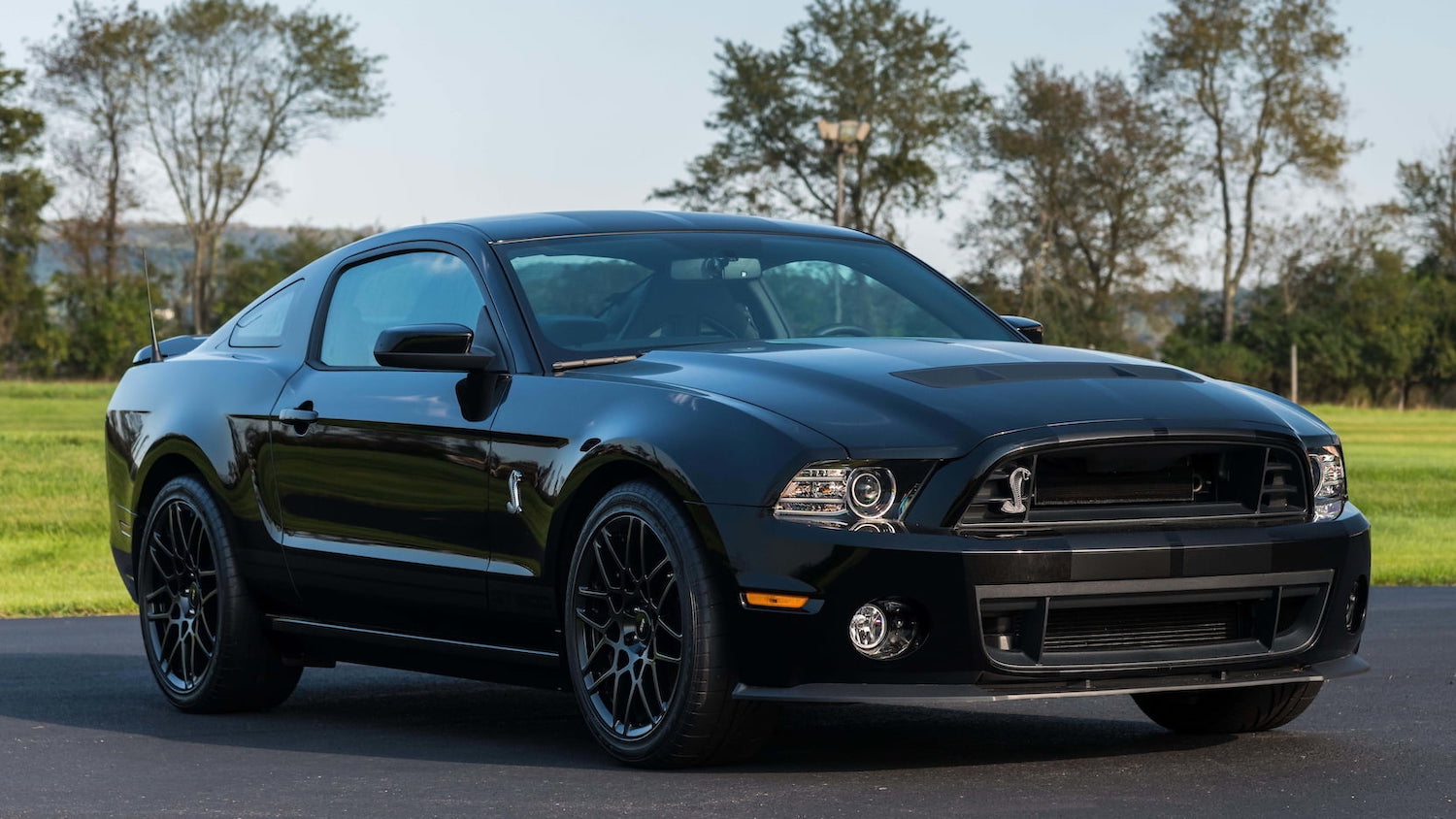4 Mustangs to buy, sell, or hold
The Ford Mustang is America’s favorite pony car and has been a bastion of affordable performance for most of its production life. With six generations and exciting powerplants ranging from turbo four-cylinders to hulking big-blocks, there are lots of flavors to choose from. Whether you’re a Mustang owner or just looking to become one, here are some suggestions on which Mustang models to consider adding to—or culling from—your collection, based on our valuation data and insurance quoting activity.
| Vehicle | |
|---|---|
| BUY: 1994–2004 SVT Cobra | 65 |
 Answering the Camaro and Firebird’s potent LT1 V-8, the SVT Cobra of 1994–95 was the last of the pushrod 5.0 V-8 Mustangs and used iron GT40 heads for improved breathing. The claimed 240-hp output belied these cars’ strong performance. For 1996, SVT Cobras received a 305-hp version of the 4.6-liter V-8 featuring four-valve heads and an aluminum block, ushering in the era of the Modular V-8 Mustang that continues to this day. Performance was again boosted in 1999 when the New Edge design refreshed the SN-95 chassis and the 32-valve 4.6-liter was rated at 320 hp. Finally, the “Terminator” Cobra saw the addition of a supercharger that increased output to 390 hp. For just a single generation of Mustang, the SVT Cobra has quite a wide variety—there’s something for fans of boost, naturally-aspirated Modular performance, or the 5.0-liter pushrod small-block. Like any high-performance Mustang, the difficulty is finding one that wasn’t driven hard and put away wet. The earlier models, however, are still a bargain for now, and they carry the prestige of SVT development and, of course, the allure of that Cobra emblem on the fender. |
|
| BUY: Fox-body 5.0 GT | 72 |
 It’s no secret that 1980s and ’90s cars are becoming popular on the collector car scene. Some of the hottest cars on the market are those that buyers longed for when they first started driving, which explains the rise and fall of, first, ’50s classics and then, later, ’60s muscle cars. Now, ’80s and ’90s cars are ripe for collecting as Gen-Xers feel the pull of nostalgia towards their favorite high school cars. That’s why Fox-body Mustangs are prime targets right now—before they become impossible to find. True, clean examples are rare at this point, as the lightweight, aftermarket-friendly cars were stripped down, hot-rodded, and drag raced by the tens of thousands, but clean examples can be had for half the price of a new subcompact crossover. Their 200-ish horsepower doesn’t sound too exciting now, but the aftermarket for Ford Windsor small-blocks is as strong as ever, and restoration parts are readily available. You’d be hard-pressed to find a rear-wheel-drive project that’s a better bargain. |
|
| SELL: 1971 Boss 351 | 50 |
 The Boss 351 seemingly brought together the best of both worlds, the high-revving Boss 302 and the brutal Boss 429. Indeed, the 351 Cleveland is a fantastic platform from which to build a street or drag race engine, and the Boss 351 kept performance alive at the Blue Oval when the end of the muscle car era was plainly in sight. With 330 underrated horsepower and a blacked-out, twin-scoop ram air hood, the Boss 351 boasted both looks and performance. The last of the first-generation Mustangs look their best in the long, almost horizontal fastback and have aged rather well, save for their considerable front overhang. Compared to its Boss brethren, however, the 351 lacks the SCCA Trans-Am appeal of the Boss 302, the mystique of the NASCAR-homologation Boss 429 engine, or the absolutely gorgeous silhouette of the 1969–70 Sportsroof. Our valuations team noted a sharp decline in quoting activity for the Boss 351, and prices have just barely started to slide, signaling that overall demand has fallen. If you’ve fallen out of love with your Cleveland-powered machine—but why would you?—now may be the time to part ways. |
|
| HOLD: 2007–14 GT500 | 74 |
 If our latest Bull Market list is any indication, collectors are warming to cars built in this century. The GT500 is a perfect example of the second coming of the horsepower wars between the Big Three, and the S197-generation Mustang brought two powertrain iterations to the top-performing pony. Initially, the supercharged 5.4-liter V-8 produced 500 hp, which was upgraded to 540 hp for 2010 and 550 hp for 2011. Because there’s no replacement for displacement—except boost—Ford went to a 5.8-liter version of its Modular V-8 for 2013 by maxing out the bore size. Instead of cast-in liners, the cylinder’s aluminum walls are coated in iron via plasma arc, like MIG-welding turned up to 11. Their power is impressive, their grip was tenacious, and their ride was, well… not great. Ford made track performance a priority and the GT500’s ride quality suffered, but that’s a small price to pay for one of the most hardcore muscle cars of the era. As more younger buyers look to fill out their collection, these brutes will likely be near the top of their wish list. Did any of your favorite Mustangs make this list? Let us know your thoughts in the comments section below. |
|

